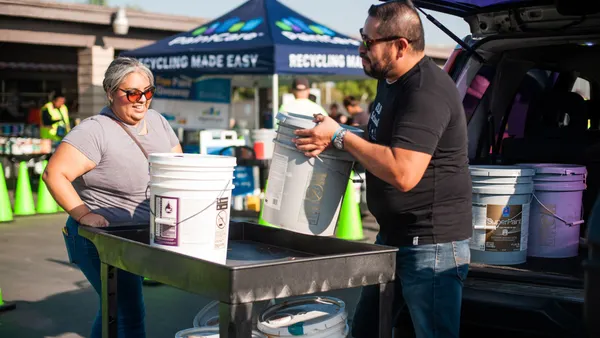Dive Brief:
- In a new report, United Nations (U.N.) officials estimate that there will be a global e-waste output of 50 million metric tons in 2018. In 2014, the total output was estimated to be 41.8 million metric tons.
- The comprehensive report found at least 14 international agreements dedicated to regulating e-waste, with an additional nine existing at regional levels. One of the findings of the report is a need for increased collaboration and coordination among UN entities when it comes to regulating e-waste. The report also found that the majority of global e-waste initiatives are happening in African and Asian regions.
- Other findings recommend focusing on the life-cycle principle (by paying more attention to design from conception to final disposal); establishing policies to remove hazardous material from e-waste before it's transported; and increasing collaboration with the private sector to investigate whether it needs to invest more addressing end-of-life e-waste.
Dive Insight:
E-waste is an international issue that may be flying under the radar, but can't be ignored. As more companies continue to put out new products, consumers continue to buy them, continuing the cycle and generating an ever-growing tide of discarded electronic devices. With literally billions of electronic devices in the U.S. alone, the industry will have to continue developing best practices for processing and recycling electronic waste.
It's crucial for more than environmental reasons, too. E-waste often means discarded batteries, which can lead to costly, sometimes deadly, fires and explosions at MRFs and in collections trucks. Currently, some heavy players in the electronics industry are manufacturing devices that are short-lived and hard to recycle, a practice that advocacy groups have called out.
One potential mitigator to growing levels of e-waste that's gaining some momentum in the U.S. is the right to repair. Repairing devices can not only save consumers money, but it can be an opportunity for businesses to create jobs and carve out a niche market. The U.N. report calls this out as a key finding, saying that right now the majority of focus is on end-of-life processing rather than upstream changes such as raw material acquisition, design, production, repair and reuse.









